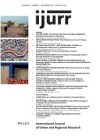The mega‐project is experiencing revived interest as a tool for urban renewal. The current mode of large‐scale urban development is, however, different from its predecessor in so far as its focus is flexible and diverse rather than singular and monolithic. However, the diversity that the new approach offers, we argue, forecloses upon a wide variety of social practices, reproducing rather than resolving urban inequality and disenfranchisement. Further, we suggest that the diversity of forms and land uses employed in these mega‐projects inhibits the growth of oppositional and contestational practices. The new mega‐project also demonstrates a shift from collective benefits to a more individualized form of public benefit. The article is based on Toronto’s recent waterfront development proposals, which we identify as an example of a new paradigm of mega‐project development within the framework of the competitive city. Its stated but paradoxical goal is to specialize in everything, allowing for the pretence that all interests are being served while simultaneously re‐inscribing and reinforcing socioeconomic divisions. Our findings are centred on four areas: institutional change; the importance of mega‐projects to global interurban competition; the exclusive nature of public participation processes; and the increasing commodification and circumscription of urban public space.
Details
Written by:
UTE LEHRER, JENNEFER LAIDLEY
Digital Object Identifier (DOI)
10.1111/j.1468-2427.2008.00830.x
About DOI
Read full article as PDF
Read full article as HTML
See the references for this article
